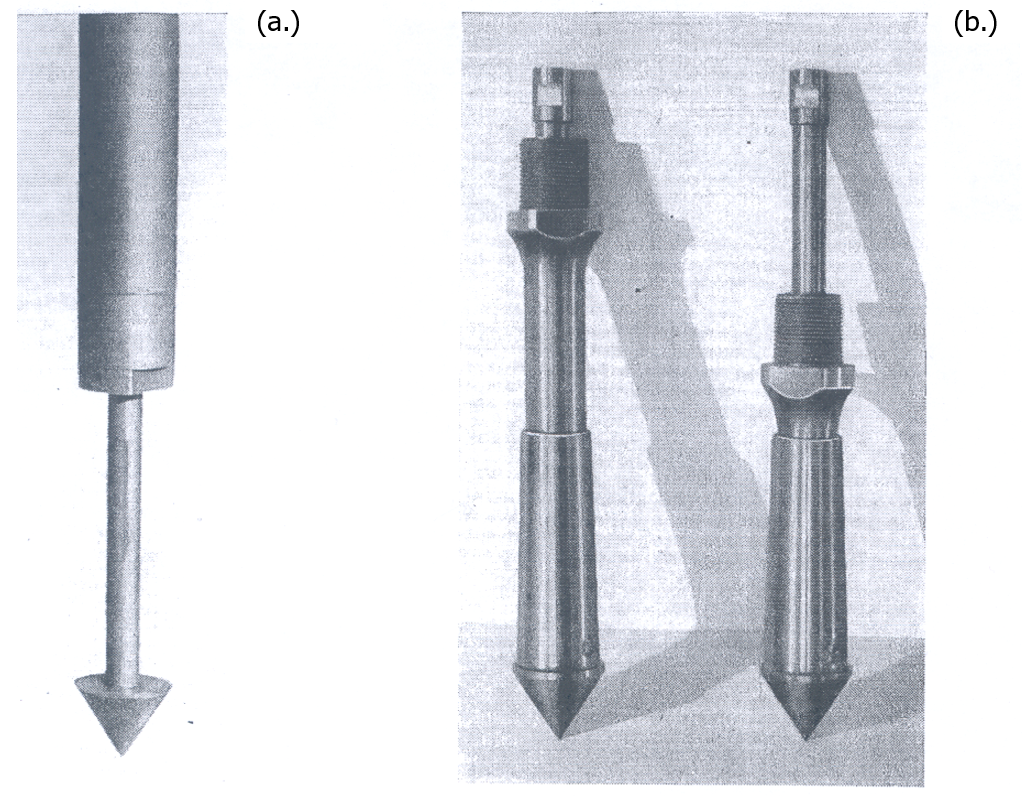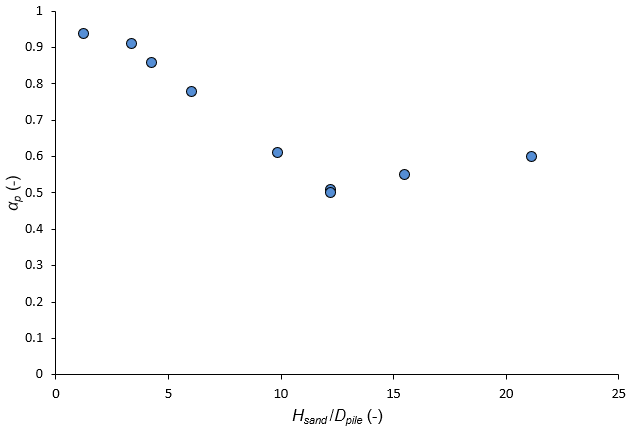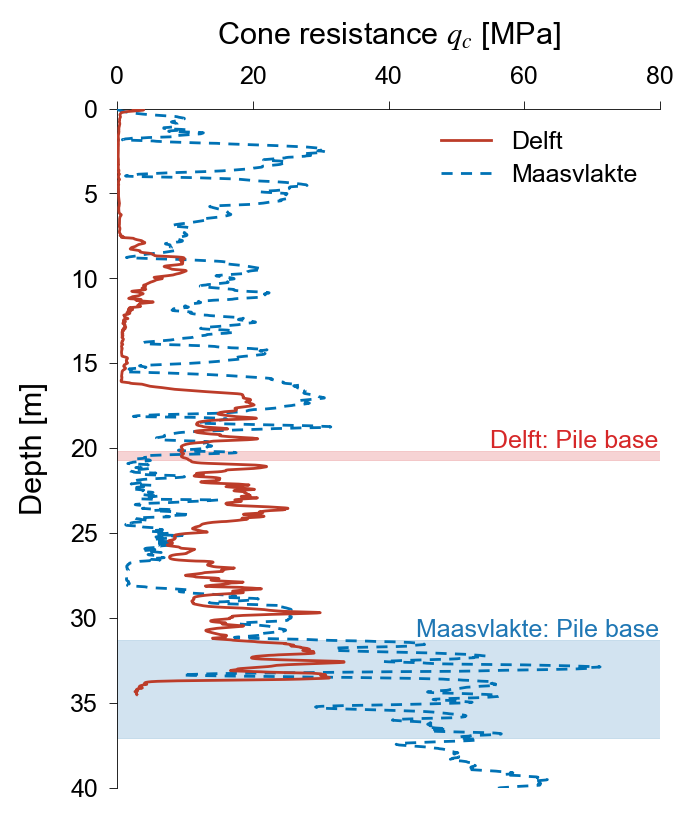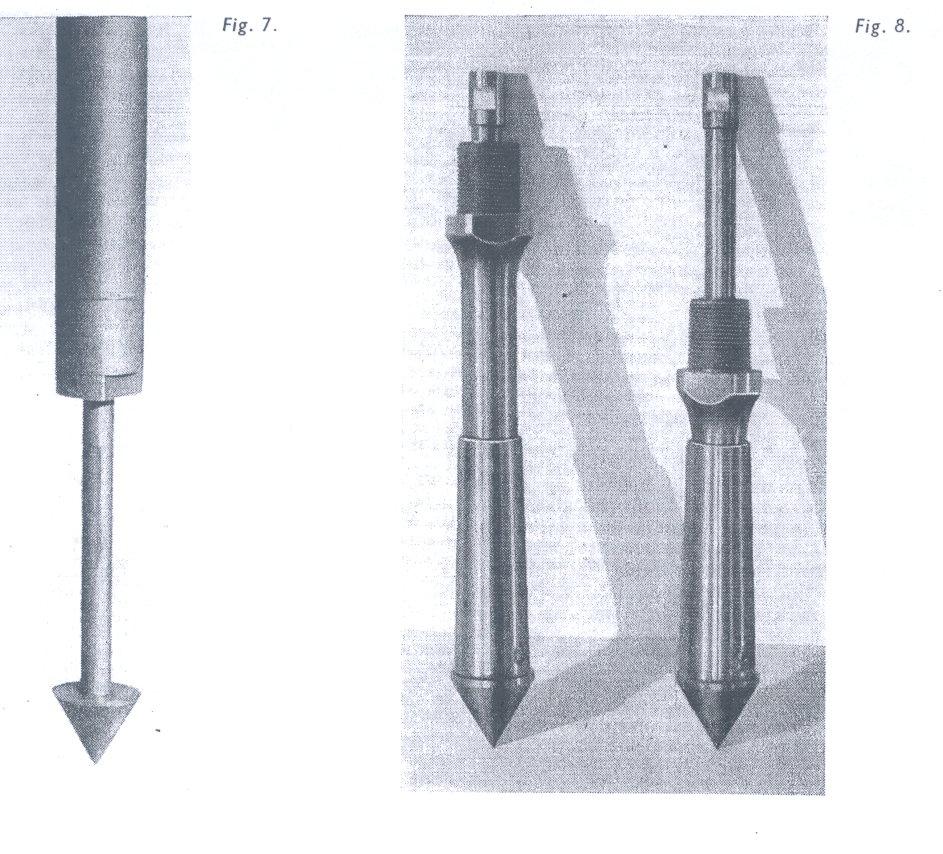Towards a new pile design code
Dirk de Lange1, Kevin Duffy2, Fei Chai3, Ken Gavin2
1 Deltares, Delft, The Netherlands
2 Technische Universiteit, Delft, The Netherlands
3 University of New South Wales, Australia
ABSTRACT
Why investigate CPT-based methods for pile design again and again? This article is a synopsis of the TKI-project Improved Axial Capacity of Piles in Sand, a joint project of Deltares, TU Delft, Rijkswaterstaat, Port of Rotterdam, NVAF, Fugro and Gemeente Rotterdam. From an economic and environmental perspective, it is attractive to investigate the ‘hidden’ safety factors and incorporate them in the design standards, avoiding oversized pile foundations. Therefore, the mechanisms that govern pile behaviour must be understood. This article provides the general background of the pile design method in NEN 9997-1 and outlines aspects which are being investigated as part of the project. Thereafter, the project methodology is described, concluding with the expected outcomes of the project.
DEEP FOUNDATIONS, CPT-BASED DESIGN METHODS, PILE LOAD TESTING
INTRODUCTION/BACKGROUND
It all started about 90 years ago: the cone penetration test (CPT) had been extended from a simple laboratory test to a deep sounding technique to estimate the size and capacity of a piled foundation [1]. The CPT was considered to be a load test on a small pile and far more reliable compared to correlations with driving records, with good agreement found between the CPT cone tip resistance and the pile toe resistance. Some engineers questioned this agreement based on the fundamental differences between a pile load test and a CPT. For instance, in the case of a pile load test, the pile tip resistance was obtained by loading the pile in tension and compression, the difference between which was considered the pile tip resistance. However, more and more research was starting to indicate that the friction response of the pile differed in compressive and tensile loading [2]. Nonetheless, good experience and analysis of pile load tests gave strong credence to the link between the cone tip resistance and pile tip resistance and as a result, it became an (inter)nationally accepted approach to design piled foundations based on CPT data.
Of course, measurement techniques constantly evolve, which also holds true for cone penetrometer testing and pile load testing. Strain gauges have been used more and more to get insights into the load distribution over the pile length [3] and multiple types of penetrometers have been developed after the original mechanical Barentsen penetrometer, for example, the mechanical mantle penetrometer, the electrical penetrometer and the adhesion jacket cone penetrometer [4], see Figure 1. It is interesting to see the amount of effort the Delft Laboratory of Soil Mechanics (LGM) put into investigating the penetrometer shape of continuous electrical soundings in order to get similar results as a discontinuous mechanical sounding [5]. In sand, it was observed that the cone resistance measured by a straight (non-narrowed) electrical cone penetrometer is significantly higher than the resistance measured by a mechanical mantle cone penetrometer. Correspondingly, pile design has primarily been based on the results of the mechanical penetrometer even though the straight electrical cone penetrometer has since become the standard in practice.

However, as per 2017, the pile class factor αp of all pile types has been reduced by 30% based on an analysis of static load tests on instrumented precast concrete and steel driven piles in the Netherlands, with the anticipation that piling companies would investigate appropriate pile class factors for their own pile types [6]. As might be expected from above, higher αp-values were found using results from mechanical CPT, although this aspect was not seen as the main explanation for the discrepancy between the design method and the measurements. As hardly any failures related to pile foundations are known as a result of the old design rules, it is likely that the current design methods are incomplete, disregarding aspects that contribute to additional pile capacity or reduced pile loading. From an economic and a carbon emission perspective, it is attractive to investigate these ‘hidden’ safety factors and incorporate them in the design standards to avoid oversized pile foundations, something which may also lead to difficulties during pile installation. Therefore, the mechanisms that govern pile behaviour must be understood. Stoevelaar et al. [7] conducted a literature study on mechanisms that could explain the possible hidden safety factors. These mechanisms were, amongst others, ageing/pile set-up, the effects of residual loads on the interpretation of pile test results, pile group effects and limiting values for the ultimate base stress and for the ultimate shaft friction.
As a result, the TKI-project Improved Axial Capacity of Piles in Sand was established in 2019, with a project duration of four years. The project is exploring numerous aspects of pile behaviour in sand through the execution and analysis of field tests, laboratory testing and numerical modelling. This comes with the aim of refining the Dutch pile design method and making a global contribution towards the understanding of pile behaviour. Presented in this article is a synopsis of the project, outlining aspects of NEN 9997-1 which are being investigated. Thereafter, the project methodology shall be described.
OBJECTIVES
The aim of the project is to investigate the following aspects:
(i) pile class factors (αp, αs)
(ii) qc averaging methods for base resistance
(iii) friction fatigue effects on shaft resistance of displacement piles
(iv) limiting resistances for assessing pile base and shaft capacities
(v) pile ageing
(vi) residual loads
(vii) natural soil variability
Within these aspects, many questions and uncertainties exist, described in Gavin et al., 2019 [8]. For instance, is a constant αs appropriate for displacement piles where friction fatigue may dominate [9]? Can the limiting base stress and/or shear stress be set at a higher level for normally consolidated sands based on experimental evidence [10]? Is the correlation between αp and penetration into the sand (Figure 2) a result of the 4D/8D-method and should a more appropriate method become adopted? Other important mechanisms to consider is the time-related increase of pile capacity in displacement piles known as pile ageing, the influence of installation conditions across all pile types and also the effect of residual stresses generated during pile installation. Notwithstanding, understanding the influence of these effects is challenging, requiring a multi-faceted approach through the use of field testing, laboratory and numerical simulation.

METHODOLOGY
Three work packages are being carried out as part of the project: field testing, physical modelling in the laboratory and a combination of numerical modelling and probabilistic analyses. Three PhD candidates are working on this project, each focussing on one of the work packages.
The focus of the field testing is being placed primarily on three different pile types: driven precast piles, screw injection (SI) piles and vibro (also known as driven cast-in-situ) piles. These pile types have been elected for due to their prevalence within the foundation industry, particularly for large infrastructural developments.
Two different test sites have been established to date, outlined in Table 1. The first set of tests, initiated and financed by Port of Rotterdam, commenced at Maasvlakte 2 in the port of Rotterdam in late 2019, comprising of tests on three driven precast piles, four SI piles and four vibro piles. The site is characterised by extremely high cone resistances in the founding sand layer, ranging between 40 and 80 MPa (Figure 3). The second series of pile tests, financed by Rijkswaterstaat, were performed on the premises of Deltares in Delft, consisting of tests on three driven precast piles between November 2020 and February 2021. Cone resistances at the site were significantly lower in the founding sand compared to those at Maasvlakte 2, ranging between 10-20 MPa at the pile tip (Figure 3).
Table 1: Details of the test piles carried out as part of the InPAD field testing programme. Note that the vibro piles were affected by concrete deterioration throughout the founding sand layer.
| Site | Pile Type | Quantity | Equivalent diameter [m] | Length [m] | Load at failure [MN] |
| Delft | Precast | 3 | 0.40 | 20-21 | 1.3-1.8 |
| Maasvlakte | Precast | 3 | 0.45 | 31-32 | 8-9 |
| Maasvlakte | SI | 4 | 0.85 | 35-37 | 18-23 |
| Maasvlakte | Vibro | 4 | 0.48 | 32.5 | 6.5-8.5 |

Both tests were carried out according class A1 as prescribed in the NPR 7201 guidance document for pile tests. For both test sites, the piles were extensively instrumented using sophisticated fibre optic instrumentation to measure the response of the pile in strain. These measurements included distributed measurements of strain using Brillouin-based techniques and also discrete point measurements using Fibre Bragg Gratings (FBG). Residual loads were also monitored in the precast piles, in addition to designated aging tests to investigate the change in capacity in the precast piles over time. Across all pile types, extensive installation data was also collected in order to discern any effects of pile installation on the resulting pile capacities.
The second work package focusses on the physical modelling of piles in the laboratory. As part of this package, centrifuge testing is being carried out in the new geo-centrifuge of Deltares [11]. These tests will include an investigation into the pile response over a wide range of cone resistances (with respect to limiting values), the effects of soil layering around the pile base (tests will be performed by means of model piles with different diameters) and also the influence of the prescribed loading scheme on pile capacity. A series of tests in the calibration chamber shall also be executed in order to compare the effects of pile jacking and pile driving.
The third work package utilises both numerical and statistical models. Part of this shall support the results of the physical modelling by investigating the influence of layering on the pile base capacity using finite element methods. Focus is also being placed on the use of reliability-based or probabilistic models for assessing pile capacity, allowing for the incorporation of inherent soil variability into pile design. A database analysis of existing pile tests is also being carried out to support the findings of the project and make conclusions as to the appropriate method for design.
OUTCOMES
Results are currently being processed and analysed with the full findings across the project work packages expected in 2023. Findings will be published via international literature and the Geotechniek magazine. The project team is aiming for improved design standards (i.e. safe and economical design). So far, findings from Maasvlakte and Delft give detailed insights into the occurrence of friction fatigue and no evidence of limiting stresses. The residual loads measured were also significant, particularly in the dense sands of Maasvlakte 2. An alternative averaging method has also been developed based on experimental data [12].
ACKNOWLEDGEMENTS
The authors are grateful for the financial support provided by the Top Consortia for Knowledge and Innovation (TKI) and the financial and technical support of the seven project partners: Deltares, Fugro, Gemeente Rotterdam, Nederlandse Vereniging Aannemers Funderingswerken (NVAF), Port of Rotterdam, Rijkswaterstaat and TU Delft.
REFERENCES
[1] Laboratory of Soil Mechanics, Delft (1936). The Predetermination of the Required Length and the Prediction of the Toe Resistance of Piles. 1st International Conference on Soil Mechanics and Foundation Engineering (p. 181-184).
[2] Beraadslaging naar aanleiding van de voordrachten van prof. ir. J. J. I. Sprenger en ir. G. C. Boonstra (1940),Theorie van den kleefpaal. – Puntweerstand van palen. De Ingenieur no. 9 (p. 55-63)
[3] Van der Veen, C. & Boersma, L. (1957). The Bearing Capacity of a Pile Pre-determined by a Cone Penetration Test. 4th International Conference on Soil Mechanics and Foundation Engineering (p. 72-75).
[4] Begemann, H.K.S.Ph. (1969). The Dutch Static Penetration Test with the adhesion jacket cone. LGM Mededelingen, XII(4) (p 69-100).
[5] Heijnen, W.J. (1972). De vorm van de elektrische sondeerconus. Verhandelingen Fugro-sondeersymposium 1972 (p. 17-27).
[6] CUR Rapport 229. Axiaal draagvermogen van palen.
[7] Stoevelaar R., Bezuijen, A., Nohl, W., Jansen, H., Hoefsloot, F. & Hannink, G. (2012). Werkdocument verborgen veiligheden.
[8] Gavin. K., Kovacevic, M.S., Igoe, D. (2021), A review of CPT based axial pile design in the Netherlands. Underground Space, 6(1), 85-99.
[9] CUR 2001-8. Bearing capacity of steel pipe piles.
[10] Te Kamp, W.G.B. (1977). Sonderen en funderingen op palen in zand. Sondeersymposium 15 jaar Fugro, Utrecht 5 oktober 1977 (p. 121-132).
[11] Zwaan, R., Terwindt, J., De Lange, D. & Bezuijen, A. (2020). A new geotechnical centrifuge at Deltares, Delft, The Netherlands. 4th European Conference on Physical Modelling in Geotechnics (p. 75-82)
[12] De Boorder (2019). Development of a new CPT averaging technique and review of existing CPT based methods for the calculation of total pile capacity MSc Thesis, TU Delft.



